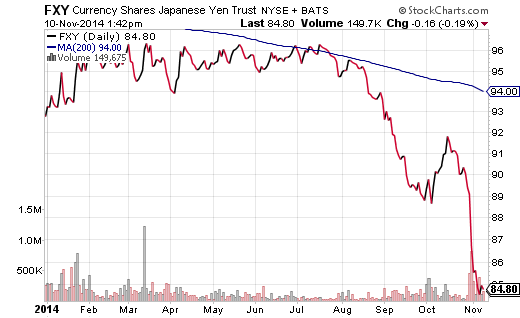The SPDR S&P 500 Trust (ARCA:SPY) trades at a P/E (trailing 12 months) of 18.64 and a P/B of 2.7. The average P/E ratio since the 1870’s is roughly 15, while the current P/B is higher than 82% of the bull market tops since the mid-1920s.
Although several may try to describe the U.S. stock market as “fairly priced,” value-oriented investors recognize the lofty premium for what it is. Specifically, zero percent interest rates, deficit spending and trillions of electronically created dollars have enriched the lives of shareholders and property owners at the expense of interest-income savers. In fact, many might argue that these policies also encouraged corporations to borrow cheaply, buy back their own stock shares and limit meaningful job hiring. Indeed, approximately 95% of Americans have been unable to increase their inflation-adjusted household income since the Great Recession ended in June of 2009.
Valuation headwinds notwithstanding, the world’s money continues to pour into the North American equity space. Exchange-traded funds with a North American focus raked in $14 billion in the week ending November 7. In contrast, developed Europe and Asia-Pacific were net losers in fund flow – $1.5 billion in outflows for each region.
If money is moving out of Europe and out of Asia-Pacific, might it have anything to do with valuation concerns? Hardly. Vanguard Europe (ARCA:VGK) offers a more reasonable P/E of 16.5 and a more seductive P/B of 1.7. The iShares MSCI Asia excl Japan Fund (NASDAQ:AAXJ) boasts a P/E of 12.4 with a tantalizing P/B of 1.4.
In truth, the reservations that investors have with countries outside the U.S. rest primarily with the global growth slowdown as well as an uncertainty that foreign central banks (e.g., European Central Bank, People’s Bank of China, Bank of Japan, etc.) can do enough to strengthen respective economies. There’s also the strength of the US Dollar. Investing in foreign equities will require some faith in a stabilizing euro and a stabilizing yen. Both CurrencyShares Euro Trust (NYSE:FXE) and CurrencyShares Yen Trust (ARCA:FXY) demonstrate that stabilization may not happen anytime soon.
Active money managers like myself often use stop-limit loss orders and trendlines to minimize the risk of bearish downtrends. That is why Europe-oriented ETFs have not been a consideration for my clients since July. Moreover, in the reallocation of those dollars, only the technical uptrends receive examination. This is why ETFs that contributed to my barbell thesis – funds like Vanguard Long-Term Bond (BLV) and iShares S&P 100 (OEF) – garnered more inflow from Pacific Park Financial, Inc.
In sum, the almighty buck’s power coupled with zero percent rate policy are giving overpriced U.S. equities the juice to grind higher. By the same token, global economic uncertainty and comparable developed world yields continue to favor longer-term U.S. bond ETFs over foreign stock ETFs. In fact, iShares 20+ Year Treasury (ARCA:TLT) increased its weekly fund flow in the week ending November 7 by 12%.
Disclosure: Gary Gordon, MS, CFP is the president of Pacific Park Financial, Inc., a Registered Investment Adviser with the SEC. Gary Gordon, Pacific Park Financial, Inc, and/or its clients may hold positions in the ETFs, mutual funds, and/or any investment asset mentioned above. The commentary does not constitute individualized investment advice. The opinions offered herein are not personalized recommendations to buy, sell or hold securities. At times, issuers of exchange-traded products compensate Pacific Park Financial, Inc. or its subsidiaries for advertising at the ETF Expert web site. ETF Expert content is created independently of any advertising relationships.




